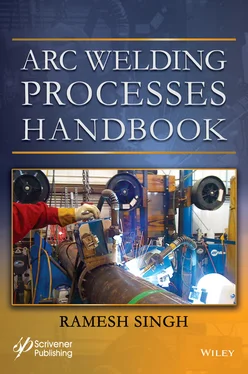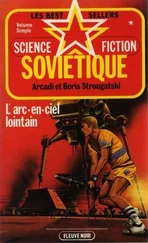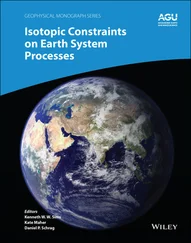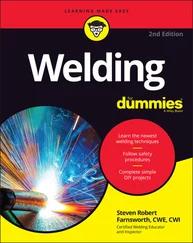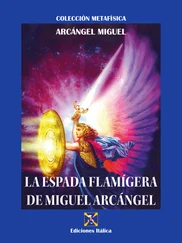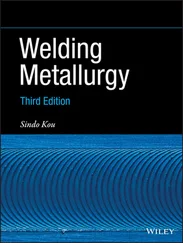Figure 3.12.1 Five basic weld designs, (Courtesy of Indian Air force training manual “Basic Welding Technology”)
Figure 3.16.1 Copper and Aluminum welding leads: note the number of fine wires that compose a cable, and the rubber sheathing that covers them
Figure 3.16.2 Various types of cable connectors, and ground clamp. Pictures Curtsy of LENCO catalogue
Figure 3.25.9.3.1 Welder is tacking a pipe prior to welding
Figure 3.25.9.3.2 A nozzle is welded on a pipe header
Figure 3.25.10.2.1 Schaeffler diagram
Figure 3.25.10.2 DeLong diagram
Figure 4.3.1 Typical GMAW welding
Figure 4.4.1 A GMAW operator welding on an offshore pipeline
Figure 4.4.1.1 Short circuit transfer (arc-action and cycle)
Figure 4.4.1.2 Current voltage range for various transfer mode
Figure 4.11.1 Typical GMAW (MIG) welding set up with the external wire feed unit
Figure 4.12.1 A typical GMAW torch with trigger type on-off switch on the handle
Figure 4.12.2 Blow out of the GMAW torch that shows some of the components that make up a welding torch
Figure 4.12.3 The GMAW torch and the cable connector
Figure 4.12.1.4 Copper and aluminum welding leads: note the number of fine wires that compose a cable, and the rubber sheathing that covers them
Figure 4.13.8.1 (a) Contour of a weld bead in the flat position with the work horizontal; (b) welding slightly uphill; (c) welding slightly downhill
Figure 4.13.12.1 WRC diagram
Figure 5.3.1 FCAW-S self-shielding tubular wire process
Figure 5.3.2 FCAW-G, gas shielding solid wire process
Figure 5.4.1 Typical FCAW setup
Figure 5.5.1 FCAW electrode classification system
Figure 5.8.7.2.1 Shows the metal transfer through the arc with CO 2shielding on the left, and 75% Ar. + CO 2on the right
Figure 6.3.1 Schematic display of the SAW process
Figure 6.3.2 Shows the submerged arc welding of a plate
Figure 6.3.3 Shows the SAW of a pipe in a fabrication shop – note the arc and flux position as the pipe rotates
Figure 6.3.4 Shows the completed pipe weld
Figure 6.3.5 Higher deposition rate of SAW process
Figure 6.6.1 Showing SAW process in progress on a pipe weld
Figure 6.6.2 Shows the collected flus for cleaning and reusing
Figure 6.7.1 Multi-wire SAW system
Figure 6.7.3 Tandem head strip wire SAW process for cladding
Figure 7.1 Structure of the welding symbol
Figure 7.2 Welding symbol arrows
Figure 7.3 Welding symbol position of the arrows
Figure 7.4 Significance of the circle on the arrows
Figure 7.5 Symbols for type of welds
Figure 7.6 Symbol of a fillet weld
Figure 7.7 Shows the side of the metal where the fillet weld is required to be made
Figure 7.8 Graphic and as built depiction of welds – note the weld sizes shown in the symbol on left and its corresponding annotation on the actual weld
Figure 7.9 Shows the addition of the length of the weld to the symbol at the left, and what it means is shown in the as built figure on the right
Figure 7.10 Adding pitch of the weld
Figure 7.11 Symbols of various types of Groove Welds
Figure 7.12 Symbol of Sq. groove weld – note the annotation of root opening
Figure 7.13 Symbol and as built of V-groove welds, note how the root gap (opening) is shown
Figure 7.14 Shows the (1) depth of V groove on both sides of the weld, (2) shows the depth of the penetration desired of the weld
Figure 7.15 Shows the specific depth of the groove weld (effective throat) desired
Figure 7.16 Symbol of a bevel groove note which side of the plate is to be beveled and to what degree
Figure 7.17 Shows U-groove symbol
Figure 7.18 Shows the J-groove symbol and the weld. Note the indicated depth of the weld
Figure 7.19 Symbol of Flare-V groove weld and as built weld
Figure 7.20 Symbol of and as built flare bevel and the weld
Figure 7.21 Shows the melt-thru weld
Figure 7.22 Shows the supplementary symbol of backing bar for the weld
Figure 7.23 Symbol of a plug weld
Figure 7.24 Shows symbols of plug and slot welds, with weld sizes, spacing and depth of the weld
Table 1.1 Welding and joining processes, type of energy used, and their abbreviations as defined by the American Welding Society
Table 1.2 Arc efficiency by welding process
Table 1.3 Shows the arc efficiency factors for various commonly used arc welding processes
Table 1.4 Indicates general limits of joining/welding processes that apply to the material listed in left column
Table 1.5 Arc efficiency factor
Table 2.8.3.1 Welding lead and their capacity
Table 2.9.1 Welding lens shades
Table 2.9.2 Helmets with auto adjusting lenses
Table 2.10.1 Electrode classification and A-numbers
Table 2.10.2 Shielded arc welding electrodes
Table 2.11.10 Common SMAW process anomalies and their suggested causes and corrections
Table 2.11.12 Weld defects and suggested changes that can correct them
Table 2.12.1 Aluminum alloy designation system
Table 2.12.5 Cast aluminum designation and numbering system
Table 2.12.6 Temper designation letters and meaning
Table 2.12.23 Stainless steel welding electrodes and heat treatments
Table 2.13 Nominal compositions of some of duplex steels
Table 2.13.1 Nominal mechanical properties of duplex stainless steels
Table 3.10.1 Basic matching guide for electrode size and nozzle
Table 3.11.1 Tungsten electrode tips
Table 3.11.2 Tungsten electrode tips
Table 3.11.3 Types of Tungsten electrode and their identification
Table 3.16.1 Welding cable current carrying capacity
Table 3.17.1 Details the NEMA rating and corresponding current output capacity
Table 3.21.1 Aluminum alloy designation system
Table 3.22.1 Cast aluminum designation and numbering system
Table 3.24.1 Aluminum welding procedures using AC high frequency stabilized arc
Table 3.24.2 GTAW stainless steel welding procedures
Table 3.25.1 Nominal compositions of some of duplex steels
Table 3.25.8 Stainless steel welding wire rod and heat treatments
Table 3.6.2 Nominal mechanical properties of duplex stainless steels
Table 3.29.1 Advantages and limitations of PAW process
Table 4.4.1 Deposition rate of various GMAW metal transfer mode
Table 4.4.1.1 WPS for carbon steel and low alloy steels with short circuit transfer mode
Table 4.4.1.2 Aluminum WPS for short circuit
Table 4.4.1.3 The transition current for spray transfer currents
Table 4.4.1.4.1 Carbon steel – Basic training WPS for spray transfer welding
Table 4.4.1.4.2 Aluminum – Basic training WPS for spray transfer welding
Table 4.5.1 Details the current and the shielding gas type used in spray transfer mode of some of the common materials
Table 4.5.5.1 Gas selection guide
Table 4.12.1.4 Welding lead current carrying capacity
Table 5.5.1 Carbon steel electrodes their use descriptions
Table 5.6.6.1 Impact of shielding gases on the mechanical properties of weld metal
Table 6.10.7 Indicates the basicity of various fluxes
Table 6.11 Common welding electrodes for SAW process
Table 7.1 Pipe schedule
Table 7.2 Terms and abbreviations relating to welding and construction
Table 7.3 F-Number, ASME specification and AWS classification
Table 7.4 P-number, group number, and type of material
Table 7.5 Qualification of metals based on the procedure qualification
Table 7.6 Temperature conversion
Table 7.7 Temperature and pressure
The book, “Arc Welding Processes Handbook”, brings together salient knowledge of arc welding methods used primarily in the industry and especially in the oil patch. The information presented about the welding process is usable and emulates the presence of your own welding engineer. Covering such welding methods as SMAW, GTAW, GMAW, FCAW and SAW with details in materials and techniques. This book is useful to both new welders as well as experienced welders. In the book, Ramesh covers these welding processes, how they work, and dives into the electrical side of welding. Welding machines, Transformers, Generators, Invertors, AC, DC, Sq. wave, Sine wave currents, Rectifiers, SCRs, Diodes, etc., as current control methods, all these are presented in a way that is easy to understand the functions of various welding machines. Most common weldable materials are discussed with welding guidance given that includes Aluminum, Nickel, Carbon steels, Stainless steels, Precipitation Hardened steels, Duplex Stainless steels, and others. The book is super comprehensive, easy to follow, and a welcome addition to any welding engineer’s bookcase. It is a truly great guide for any budding engineer or welder to help them master their skills.
Читать дальше
